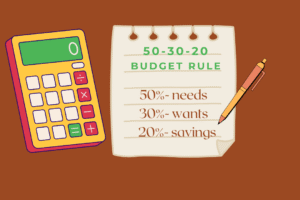Introduction
Living in a nation where inflation is continually eating absent at your control can feel like attempting to hold water in your hands. No matter how much you gain, the value of your cash appears to decline with each passing month. In such times, having a crisis fund isn’t fair a money-related strategy; it’s a lifesaver. But how do you spare cash when costs keep rising? Let’s break it down step by step in a way that really works, indeed, in extreme financial climates.
Why an Emergency Fund is Crucial in High-Inflation Economies
Crisis support is your security net. In a steady economy, it makes a difference if you cover startling costs like medical bills or work misfortune. But in high-inflation nations, it gets to be indeed more crucial since expansion itself is a crisis. The rising fetched of nourishment, lease, utilities, and healthcare implies you require a pad to ensure your standard of living.
Understanding the Effect of Inflation on Savings
Inflation dissolves the genuine value of your reserve funds. Envision putting aside $100 nowadays, and in a year, its buying control is decreased to $70. That’s the unforgiving reality in economies with tall expansion. This makes it not only basic to save, but also to store your money in ways that preserve or enhance its value.
Step One: Set a Realistic Emergency Fund Goal

Instead of pointing to the classic “three to six months of expenses,” alter your objective to your neighborhood reality. If expansion is running tall, costs seem to be altogether higher than they are presently. A great approach is to begin small, maybe one month of expenses, and keep adjusting as your wage grows.
Break Down Monthly Needs
List your basic costs like lease, utilities, basic supplies, transportation, and medication. This gives you a clear number to point to instead of guessing.
Step Two: Start Small but Stay Consistent
Consistency is more critical than the sum. Indeed, if you can, as it were, put aside a modest parcel of your salary, do it each time you get paid. Little drops fill a bucket, and over time, your finances will grow.
Step Three: Choose the Right Place to Store Your Fund
In high inflation countries, keeping your crisis reserve funds beneath your mattress or in an essential bank account can annihilate their value. In step, investigate choices like:
High-Yield Reserve Fund Accounts
Some banks offer accounts that pay intrigued over the expansion rate. Indeed, if marginally, this makes a difference in protecting value.
Foreign Cash Accounts
If your nearby money is unstable, keeping a portion of your crisis finance in more grounded outside monetary currencies like USD or EUR can ensure its value.
Stable Digital Assets
In a few nations, individuals utilize stablecoins pegged to the US dollar as a way to shield their investment funds from swelling. But as it were, do this if you completely get the risks.
Step Four: Automate Your Savings
Make it less demanding on yourself by setting up programmed exchanges. The less you think approximately it, the more reliable you’ll be. Think of it like paying a charge to your future self.
Step Five: Cut Non-Essentials and Redirect the Savings
High swelling strengths everybody to make extreme choices. Cancel memberships you don’t utilize, cook more at domestic, and cut down on extravagances. Each dollar spared can go directly into your crisis fund.
Step Six: Use Inflation-Resistant Assets
Your crisis support ought to continuously be fluid, but a portion of it can be put away in resources that keep up esteem way better than cash. Illustrations include:
Gold or silver
Inflation-linked bonds
Real bequest investment fund pools
Keep in mind, these ought to complement, not supplant, your fluid crisis cash.
Step Seven: Revisit and Adjust Regularly
Inflation isn’t inactive. What secured three months of costs nowadays might not be sufficient tomorrow. Survey your crisis finance at slightest every three to six months and increase commitments if necessary.
Step Eight: Build Multiple Layers of Protection
Instead of keeping your crisis finance in one frame, spread it out. For example:
50% in a neighborhood bank account for speedy access
30% in remote cash or steady assets
20% in inflation-resistant investments
This enhancement shields you from sudden stuns in one sector.
Step Nine: Avoid Debt While Building Your Fund
In tall expansion, intrigued rates are ordinarily sky-high. If you depend on obligation during a crisis, you may burrow a more profound gap. That’s why your crisis finance is your to begin with line of defense.
Step Ten: Protect Your Income
Building a crisis fund is simpler if your salary increases nearby swelling. Consider side hustles, independent work, or part-time gigs that can bring in additional cash. More streams of wages cruel more opportunities to save.
Step Eleven: Don’t Forget Accessibility
Your crisis support must be accessible when you require it most. Whereas contributing is awesome, don’t bolt up all your investment funds in resources you can’t touch rapidly. Continuously keep at slightest one month’s worth of cash available at a moment’s notice.
Step Twelve: Educate Yourself About Local Options
Every nation has interesting budgetary apparatuses. A few governments offer reserve fund bonds intended for expansion. Others have agreeable reserve funds, groups, or microfinance teach. Investigate what’s secure and common sense in your country.
Step Thirteen: Create a Backup Plan
Sometimes, indeed, the best investment funds won’t be sufficient. In tall expansion economies, you may also need to get ready options like borrowing from trusted family, getting to community stores, or selling non-essential assets.
Conclusion
Building a crisis support in nations with high inflation isn’t simple, but it’s conceivable. The key is to begin small, be steady, store your investment funds shrewdly, and alter frequently. Think of it as building a shield against life’s vulnerabilities, one layer at a time. The sooner you start, the more grounded your shield becomes.
FAQs
How much should I save if my country has hyperinflation?
Start with one month’s costs and build up slowly. Hyperinflation makes it difficult to anticipate the future, so center on liquidity and flexibility.
Is it secure to keep crisis reserves in remote currency?
Yes, if your nearby money is unsteady, outside money accounts can ensure esteem. Fair makes beyond any doubt that withdrawals are simple when needed.
Should I utilize cryptocurrency for my crisis fund?
Stablecoins pegged to solid monetary standards can offer assistance, but maintain a strategic distance from unstable cryptos like Bitcoin for crisis reserves since value can swing wildly.
Can gold be utilized as a crisis fund?
Gold is a great fence against swelling, but it’s not exceptionally fluid for crises. Keep, as it were, a little parcel in gold.
How do I keep motivated to save during tough times?
Remind yourself that each commitment, no matter how little, is a step toward monetary flexibility. Visualize your crisis finance as your individual security shield.



